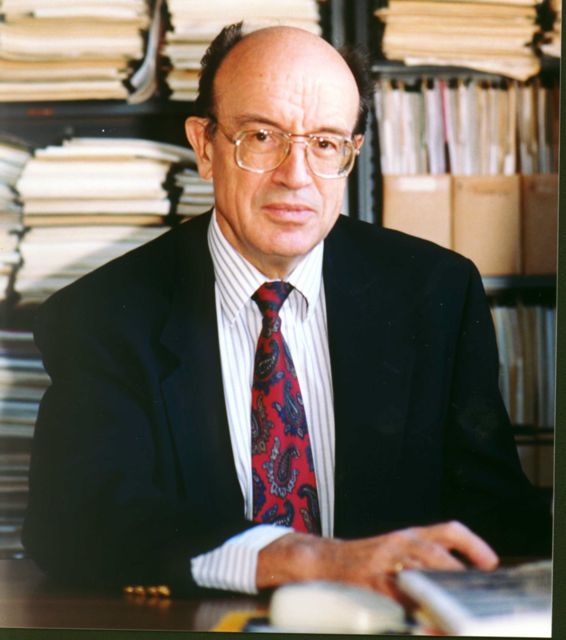Prominent transit planner criticizes SEPTA regional rail changes

Although SEPTA eliminated its regional rail numbering system a year ago, a prominent University of Pennsylvania transportation planner is still up in arms.
In an open letter to SEPTA general manager Joe Casey, emeritus engineering professor Vukan Vuchic blasted the elimination of regional rail numbers ― and the simultaneous elimination of separate colors for each of the lines ― calling the changes “destructive to the quality of RRD [regional rail division] services and detrimental to the riding public.”
“Under the pretext that the information system on RRD was confusing,” he wrote, “SEPTA introduced changes which actually eliminated most information, degraded the system’s image and introduced illogical and often directly incorrect information. Bearing in mind the facts that the changes that cost tens of thousands of dollars resulted in the virtual elimination of the concept of diametrical lines in our regional network, produced confusing schedules, reduced the legibility and contents of signs, these ‘innovations’ have been a real fiasco.”
Asked for comment, SEPTA spokeswoman Jerri Williams said the authority would have a response to the letter by the end of the week.
SEPTA changed its regional rail designations after a year of internal debate. Officials at the time argued that the previous system was confusing to out-of-town riders who didn’t realize that, say, an R8 train could be traveling to both Chestnut Hill West and Fox Chase.
But Vuchic, one of the designers of the regional rail system argued vociferously at the time that the move would represent an abandonment of the chief benefit of the Center City commuter tunnel.
At the time the tunnel opened in 1984, he sketched out a plan that would have established a European-type S-Bahn service on regional rail ― with trains running every 15 or so minutes as is the case with the Washington D.C. Metrorail system.
But a variety of factors, including persistent funding shortfalls, prevented SEPTA from adopting that model, and off-peak trains on most lines now run every hour.
Vuchic reiterated many of these points in his letter, which he says he wrote because of calls and emails he received from colleagues “expressing concerns” about the changes.
He said the changes have “diminished” the “basic concept of transit lines” and that SEPTA was underutilizing the railroad by focusing on suburb to Center City commuters as opposed to other markets of riders.
He also criticized SEPTA’s aesthetic choices, writing that “SEPTA has now become the first system in the world which has abandoned colors” and that the shade of gray that replaced them “has the lowest visibility.”
“As a conductor said on an RRD train, ‘It is not even a color, it is drab gray,’” Vuchic wrote.
He said that public opinion was squarely on his side, writing that “negative reactions to the new information system are unanimous.”
“Passengers are confused, unable to find where the train proceeds from center city (sic), nor which stations it serves. Conductors admit that the signing is much more limited than it was. And nobody knows how many passengers have been lost due to the confusion,” he wrote.
Interviews PlanPhilly conducted with riders immediately after the name change revealed little confusion.
In the letter, Vuchic offered to help SEPTA design a new designation system for regional rail that would allow trains to change lines without sacrificing the benefits of the S-Bahn-like system he designed.
At the time of the changes, SEPTA argued that most off-peak trains changed lines while passing through the Center City tunnel, further confusing riders.
Matt Mitchell of the Delaware Valley Association of Rail Passengers, who received a copy of the letter, said that Vuchic was thinking longer-term than many other regional planners by voicing these concerns.
He added, though, that S-Bahn service may not work for regional rail given the expansiveness of the system and differing land use patterns between Philadelphia and European cities. Many suburb-to-suburb trips, Mitchell said, will always be more convenient by automobile.
While he said that Vuchic had several “perfectly valid complaints” he cautioned that “there are bigger barriers to using this as a true regional network than just the things under SEPTA’s control, like [the] nomenclature” of regional rail lines.
The city, which also received a copy of the letter, did not return a call for comment.
Though Vuchic, currently in Europe, said he was unable to comment further on his letter until the end of the month, it appears to have been sent, in part, because he feels his recent advice has been ignored by SEPTA management.
“I am quite upset by the fact that you ignored numerous pieces of advice I gave to you and members of your staff,” he wrote. And in an earlier interview with PlanPhilly, he expressed frustration that, though transit systems around the world solicited his advice, SEPTA ignored it.
His letter promised a follow-up in which he would lay out objections to one SEPTA plan for smart card implementation that would introduce one-way fares to regional rail.
Contact the reporter at acampisi@planphilly.com
WHYY is your source for fact-based, in-depth journalism and information. As a nonprofit organization, we rely on financial support from readers like you. Please give today.






